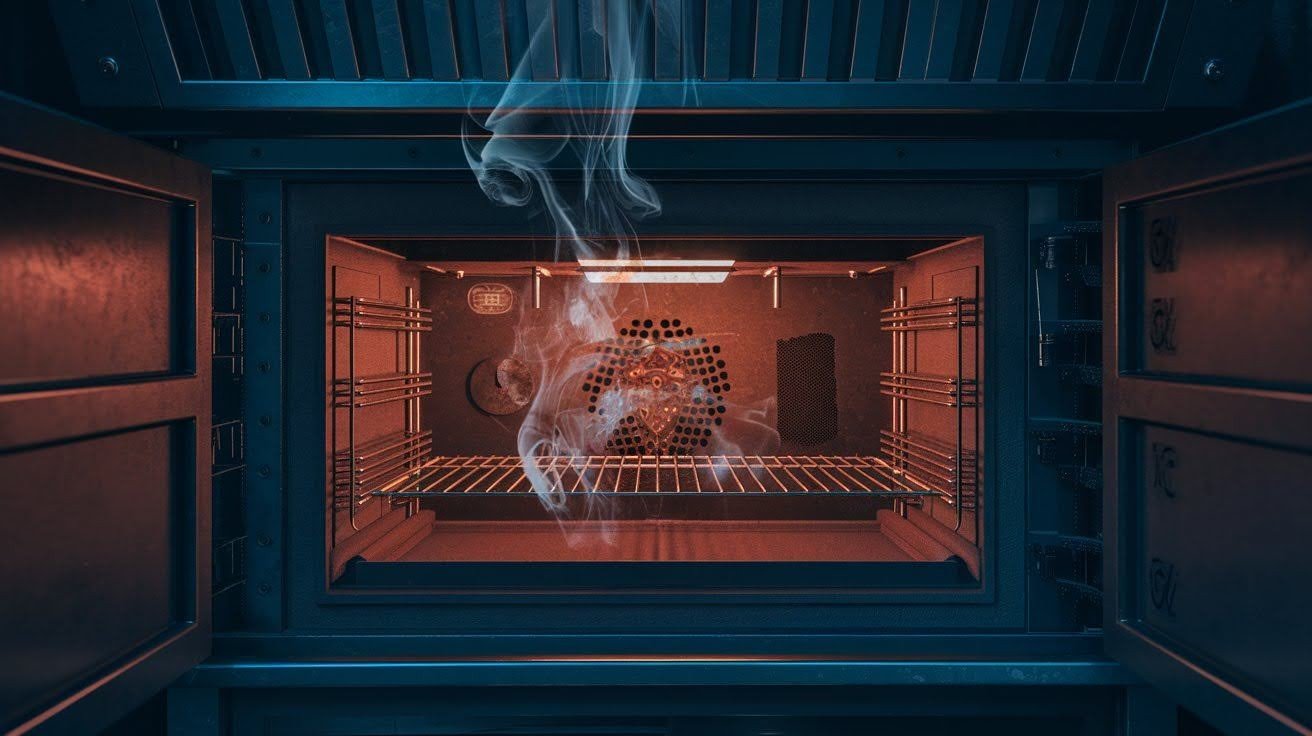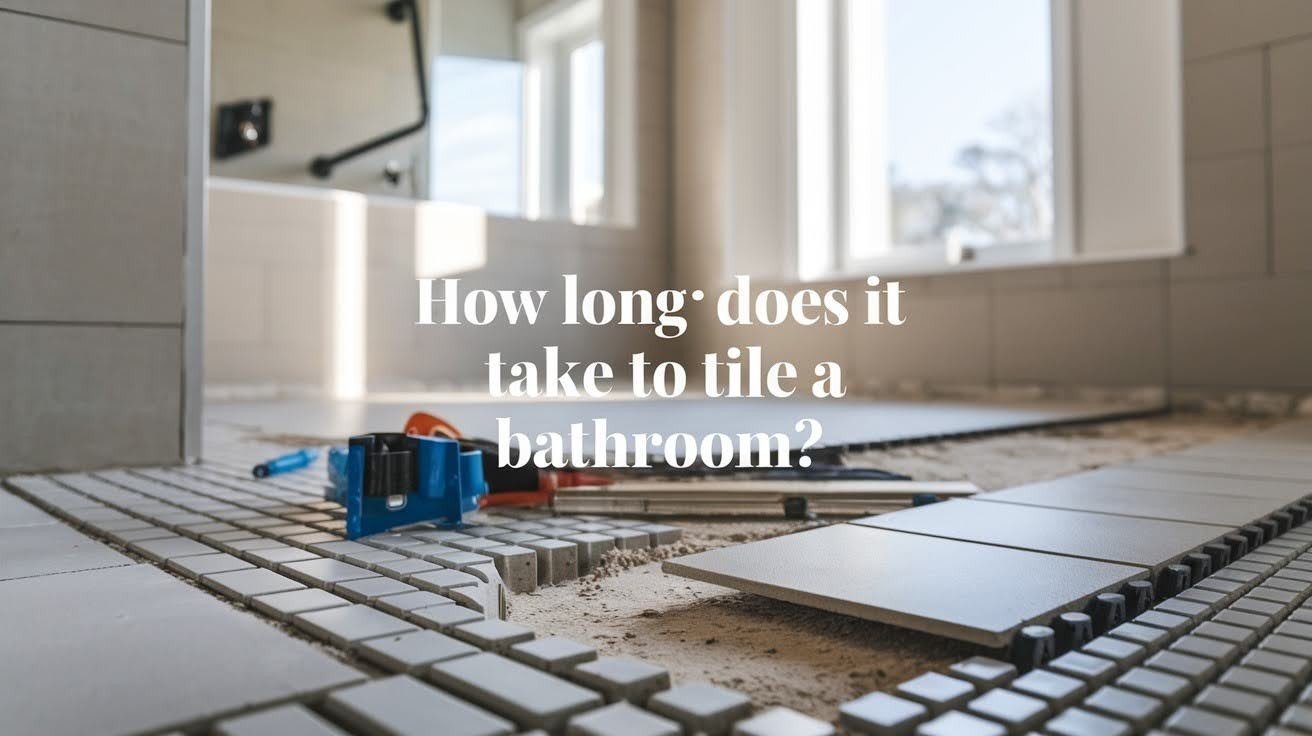Many homeowners assume their self-cleaning oven feature is completely safe to use. This belief can lead to serious health and safety risks that most people never consider.
Self-cleaning oven dangers include carbon monoxide release, toxic fumes, fire hazards, and equipment damage. These ovens reach extreme temperatures up to 932°F during cleaning cycles, creating multiple safety concerns for your household.
This guide covers the specific risks, safety precautions, and safer alternatives you need to protect your family and home.
The Main Safety Risks of Self-Cleaning Ovens

Understanding self-cleaning oven dangers starts with knowing exactly what happens during these high-temperature cycles. The extreme heat creates several serious safety concerns that can affect your health and damage your appliance.
Carbon Monoxide Poisoning Risk
Research shows that many self-cleaning ovens release carbon monoxide during cleaning cycles. When leftover food particles burn at extremely high temperatures, they produce this deadly gas that can quickly fill your kitchen and home.
Carbon monoxide is odorless, tasteless, and invisible, making it particularly dangerous. This poisonous gas significantly affects air quality and can cause serious health problems for anyone breathing it in.
Symptoms of carbon monoxide exposure include headaches, dizziness, nausea, and confusion. In severe cases, carbon monoxide poisoning can be fatal, especially in poorly ventilated spaces.
Toxic Fume Release
Teflon coatings inside your oven break down when exposed to the extreme temperatures of self-cleaning cycles. These coatings can withstand normal cooking temperatures but become dangerous when heated beyond their limits.
When Teflon breaks down, it releases toxic fumes that cause coughing, sweating, breathing difficulties, and flu-like symptoms. People with existing respiratory conditions face even greater risks from these harmful emissions.
These toxic fumes circulate throughout your indoor air and can affect everyone in your household. The impact on air quality can last for hours after the cleaning cycle ends.
Fire and Equipment Damage Hazards
Even after removing large food particles, grease can still ignite during self-cleaning cycles due to the extreme heat. Temperatures exceeding 800°F can cause even small amounts of residual grease to catch fire.
The intense heat can also damage internal oven components, including control panels and fuses. These expensive repairs often cost more than professional cleaning services would have.
Glass oven doors face a particular risk of shattering during self-cleaning cycles. While oven glass is strengthened for heat resistance, the extreme temperatures can cause thermal stress that leads to sudden breakage.
Who Is Most at Risk?
Certain household members face higher risks from self-cleaning oven dangers. Age, health conditions, and sensitivity levels all play important roles in determining who might be most affected by the toxic fumes and extreme temperatures.
Vulnerable Household Members
Children face significant burn risks from the extremely hot oven surfaces during cleaning cycles. The exterior of self-cleaning ovens becomes dangerously hot, and curious children may not understand the danger of touching these surfaces.
People with asthma or other respiratory conditions should completely avoid the kitchen during self-cleaning cycles. The toxic fumes and poor air quality can trigger serious breathing problems and potentially life-threatening reactions.
Pets, particularly birds, are extremely sensitive to the toxic fumes released during cleaning cycles. Birds have delicate respiratory systems that make them especially vulnerable to the chemical emissions from overheated Teflon coatings.
Household Situations That Increase Danger
Poor ventilation in kitchen areas significantly increases the concentration of toxic fumes and carbon monoxide. Kitchens without adequate airflow trap dangerous gases, creating hazardous conditions for everyone in the home.
Older oven models with worn components pose additional risks during self-cleaning cycles. Aging gaskets, damaged insulation, and worn electrical components can fail under extreme temperatures, leading to fires or equipment damage.
Homes without working carbon monoxide detectors face serious safety risks when using self-cleaning features. These detectors provide crucial early warning systems that can save lives when dangerous gas levels build up.
Understanding How Self-Cleaning Systems Work
Self-cleaning ovens use two main technologies to clean interior surfaces. Understanding these systems helps explain why self-cleaning oven dangers exist and how they affect your household safety.
Pyrolytic systems heat ovens to extremely high temperatures, typically over 932°F, to burn food residue into ash. Catalytic systems operate at lower temperatures, around 392°, but still pose safety risks through chemical processes and extended cleaning times.
These systems lock oven doors during cleaning cycles, which typically last 3-5 hours depending on the model. This safety feature prevents accidental contact with extreme temperatures, but also means you cannot stop the cycle if problems occur.
The extreme temperatures required for effective cleaning create the perfect conditions for carbon monoxide production, toxic fume release, and equipment damage that define self-cleaning oven dangers.
Essential Safety Precautions If You Use This Feature
If you decide to use your self-cleaning feature despite the risks, following proper safety protocols is essential for protecting your household.
- Remove all oven racks, pans, and food debris before starting the cycle
- Open windows and turn on range hoods to improve ventilation
- Keep the stovetop area completely clear, as it becomes extremely hot
- Monitor for excessive smoke throughout the entire cleaning process
- Never leave your home while the self-cleaning cycle is running
- Install and maintain working carbon monoxide detectors in your kitchen area
These precautions can help reduce some self-cleaning oven dangers, but they cannot eliminate all risks associated with this feature.
When Should You Avoid Using Self-Cleaning Mode?
Several situations make using self-cleaning features particularly dangerous and should be avoided completely to protect your household’s safety.
- Never run cleaning cycles before hosting events or gatherings
- Avoid use when anyone in your household has respiratory conditions
- Skip cleaning cycles if your kitchen has poor ventilation
- Do not use on older ovens showing signs of wear or damage
- Avoid cleaning cycles during pregnancy or when elderly family members are present
Recognizing these high-risk situations helps you make safer decisions about when self-cleaning oven dangers outweigh any convenience benefits.
Safer Alternatives to Self-Cleaning Cycles
Professional oven cleaning services offer effective cleaning without the safety risks associated with extreme temperature cycles.
- Professional cleaners use safe, effective products without toxic fumes
- Manual cleaning with appropriate products eliminates fire and carbon monoxide risks
- Regular maintenance reduces the need for intensive cleaning cycles
- The cost of professional cleaning is often less than potential equipment repairs
- Safe cleaning methods protect family health and appliance longevity
These alternatives provide thorough oven cleaning while eliminating the serious safety concerns that make self-cleaning ovens dangerous.
What Experts and Research Say About Self-Clean Safety?
Consumer Reports data shows that self-cleaning-related problems occur in only 1 percent of ovens, but other issues, like ignition problems, affect 8 percent of gas ranges. These statistics help put the relative risks in perspective.
Technical service experts report that door latches, electrical components, and heating elements can fail during self-cleaning cycles. The extreme heat stress on these components creates repair costs that often exceed the price of professional cleaning services.
Appliance professionals recommend running self-cleaning cycles several weeks before important events to identify potential problems. This timing prevents last-minute equipment failures when you need your oven most.
Conclusion
Self-cleaning oven dangers include carbon monoxide release, toxic fumes, fire risks, and equipment damage that can seriously affect your household safety. These risks are particularly concerning for children, people with respiratory conditions, and pet owners.
The extreme temperatures required for self-cleaning create multiple hazards that proper ventilation and precautions can reduce but not eliminate. Professional cleaning services and manual cleaning methods offer safer alternatives that protect both your family and your appliance.
Consider your household’s specific situation, health conditions, and kitchen ventilation before using self-cleaning features. Prioritizing safety over convenience helps ensure your family’s well-being while maintaining a clean, functional oven.
Frequently Asked Questions
Can Self-Cleaning Ovens Cause House Fires?
Yes, self-cleaning cycles can ignite grease residue and damage electrical components, potentially causing fires. Proper preparation and monitoring reduce but don’t eliminate this risk.
How long should I Wait Before Using My Oven After Self-Cleaning?
Wait at least 2-3 hours after the cycle ends for complete cooling. Check that the oven door unlocks and no unusual odors remain before normal use.
Are Newer Self-Cleaning Ovens Safer Than Older Models?
Newer models have improved insulation and safety features, but self-cleaning oven dangers still exist. Age doesn’t eliminate risks from extreme temperatures and toxic fume production.
What Should I Do If My Oven Produces Excessive Smoke During Cleaning?
Immediately open windows, turn on ventilation, and consider stopping the cycle if smoke levels seem dangerous. Excessive smoke may indicate equipment problems requiring professional inspection.
Is It Normal for My Kitchen Smoke Detector to Go Off During Self-Cleaning?
Some smoke detector activation is normal due to burning residue, but excessive or persistent alarms may indicate dangerous conditions requiring immediate attention and cycle termination.






